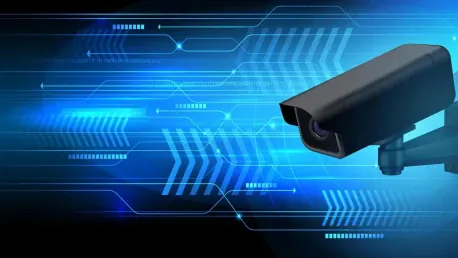The retail industry is consistently plagued by the issue of theft, leading to considerable financial losses for small to medium-sized enterprises (SMEs). The need for robust security measures is more critical than ever. Fortunately, the advent of Internet of Things (IoT) technology offers promising solutions to bolster security without overwhelming expenses. This article delves into how IoT solutions can be employed effectively to safeguard retail establishments.
The Growing Threat of Shoplifting
Shoplifting represents a significant threat to the profitability of retail businesses. Data from the Crime Survey for England and Wales indicates a startling 23 percent increase in shoplifting offenses in the twelve months ending September 2024. This alarming trend underscores the urgency for retailers to pivot towards innovative and efficient security measures.
Traditional security systems, characterized by their limitations like grainy CCTV footage and easily bypassed locks, are no longer adequate. Retailers seek advanced solutions that offer real-time monitoring and instant alerts, providing a proactive approach to security. Inefficient security measures can lead to financial losses, eroding the profitability of businesses, thus rendering the investment in state-of-the-art security systems not just a necessity but a wise business decision.
Premises Security with IoT
IoT-enabled surveillance cameras stand out as a vital tool for retail security, providing real-time monitoring and remote access to live footage. This capability allows business owners to keep an eye on their premises from anywhere, ensuring continuous supervision. The advantage of having this kind of tech is unmistakable as it empowers owners to maintain control and oversight even when they are not physically present at the establishment.
In addition to surveillance cameras, motion-activated lighting and automated alarm systems integrated with IoT can distinguish between regular activities and potential threats, significantly reducing false alarms. Furthermore, panic buttons linked to IoT networks empower employees to discreetly notify authorities during dangerous situations. This integration not only enhances security but also makes the workplace a safer environment for staff.
Real-Time Inventory Management
Smart shelves leveraging RFID tags and small sensors offer a practical solution for real-time inventory monitoring. This innovative approach is particularly beneficial for tracking high-value items, as it enables store managers to receive immediate alerts if items are tampered with or moved unusually. Such systems can determine the exact location of an item, making it easier to respond swiftly to any suspicious activity.
Maintaining a well-stocked inventory becomes effortless with real-time data from smart shelves. By preventing theft and ensuring optimal inventory levels, retailers not only enhance security but also streamline operational efficiency. This aspect is crucial because it allows businesses to reduce the time and resources spent on inventory management, thereby lowering operational costs and improving profitability.
Securing Restricted Areas
Securing high-value assets in stockrooms and other restricted zones is a critical concern for retailers. IoT-based access control systems offer a sophisticated solution, enabling keyless entry through mobile apps or smart keycards. This innovation ensures real-time management of access permissions, allowing immediate updates to access rights as needed.
Immediate alerts are triggered if an unauthorized access attempt occurs, allowing store managers to take prompt action. Implementing intelligent access control enhances the security of valuable assets and sensitive areas within the retail environment. This level of monitoring not only protects the physical assets but also safeguards sensitive data and information, which is increasingly crucial in today’s digital age.
Selecting the Right IoT Solutions Provider
The seamless integration of IoT solutions depends on choosing the right provider. Businesses like Crystaline, in partnership with Vodafone, exemplify providers offering end-to-end support through reliable IoT solutions. These solutions ensure advanced security and connectivity systems, catering to businesses of all sizes. The careful selection of a service provider is essential to ensure that the implementation of IoT technology aligns with the specific requirements of the business.
Adopting IoT technology from trusted providers guarantees that retailers benefit from comprehensive support and dependable nationwide coverage. This vital step ensures the effective implementation and operation of security systems, further fortifying retail establishments against theft and security threats. These partnerships not only provide the necessary technological solutions but also offer ongoing support, which can be invaluable for smaller businesses looking to leverage IoT without having extensive in-house expertise.
Future Considerations
The retail industry frequently faces the issue of theft, which results in significant financial losses, especially for small to medium-sized enterprises (SMEs). The urgency for stringent security measures has never been higher. Luckily, the rise of Internet of Things (IoT) technology provides cost-effective solutions to enhance security. This article explores how IoT solutions can be effectively utilized to protect retail businesses. IoT technology includes a range of devices and systems that connect over the internet, enabling real-time monitoring and control. Smart cameras, intelligent alarm systems, and inventory tracking sensors are some of the IoT applications that can safeguard stores. These technologies not only deter theft but also enhance overall operational efficiency. By integrating IoT solutions, retailers can monitor their premises around the clock, receive alerts about suspicious activities, and make informed decisions. This proactive approach ensures that security is bolstered without incurring overwhelming expenses, thereby safeguarding both assets and peace of mind for retail operators.









